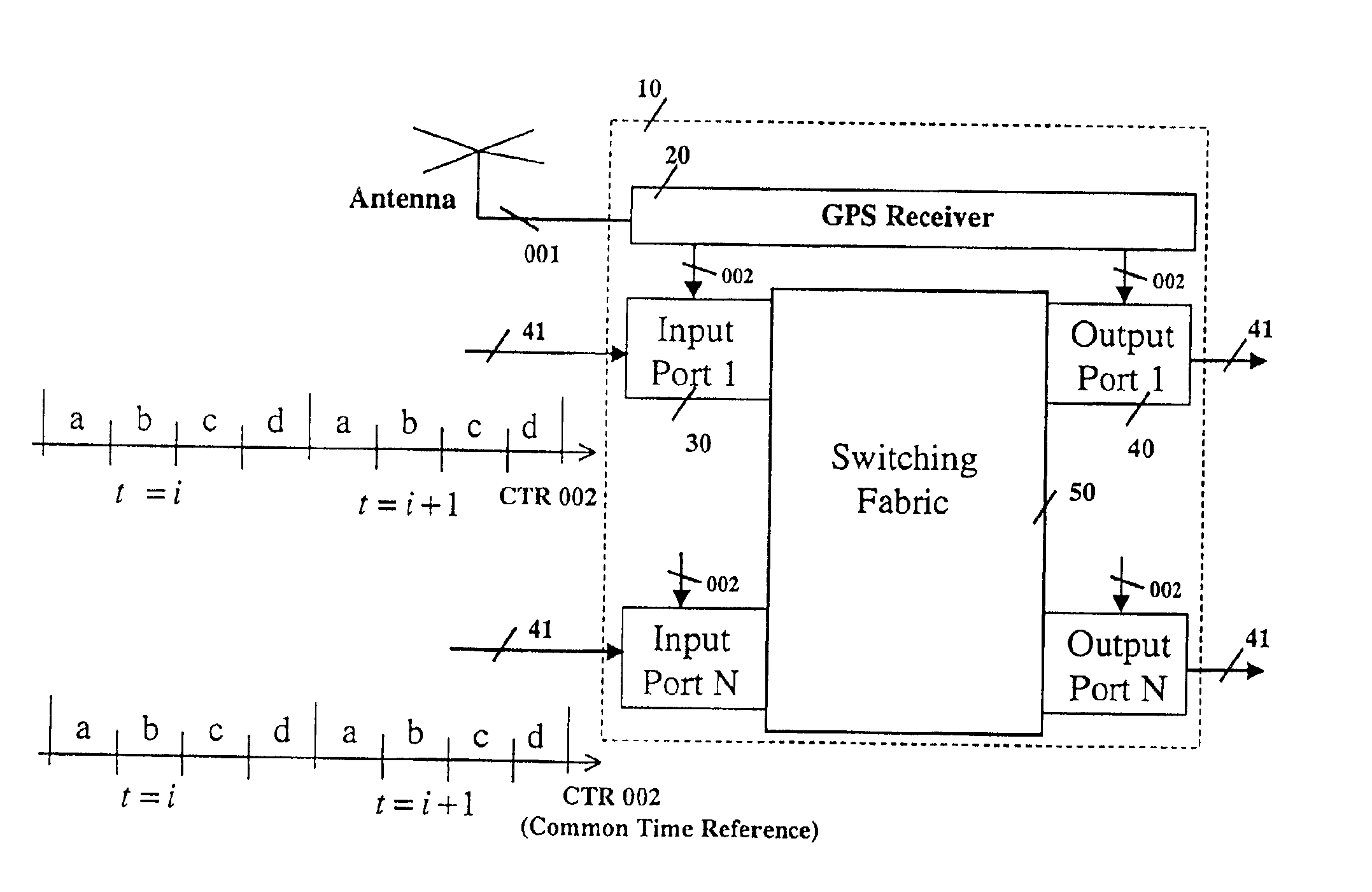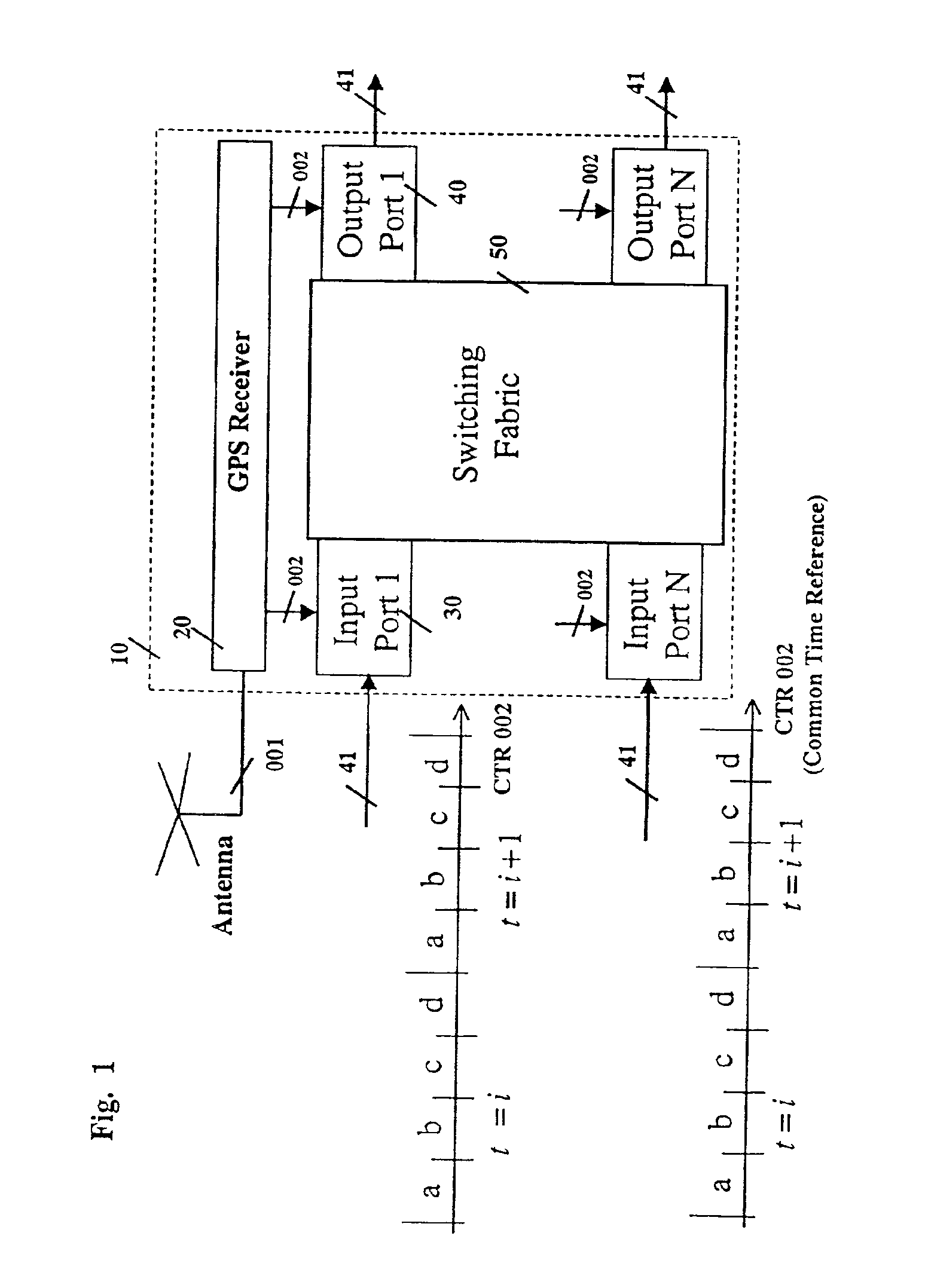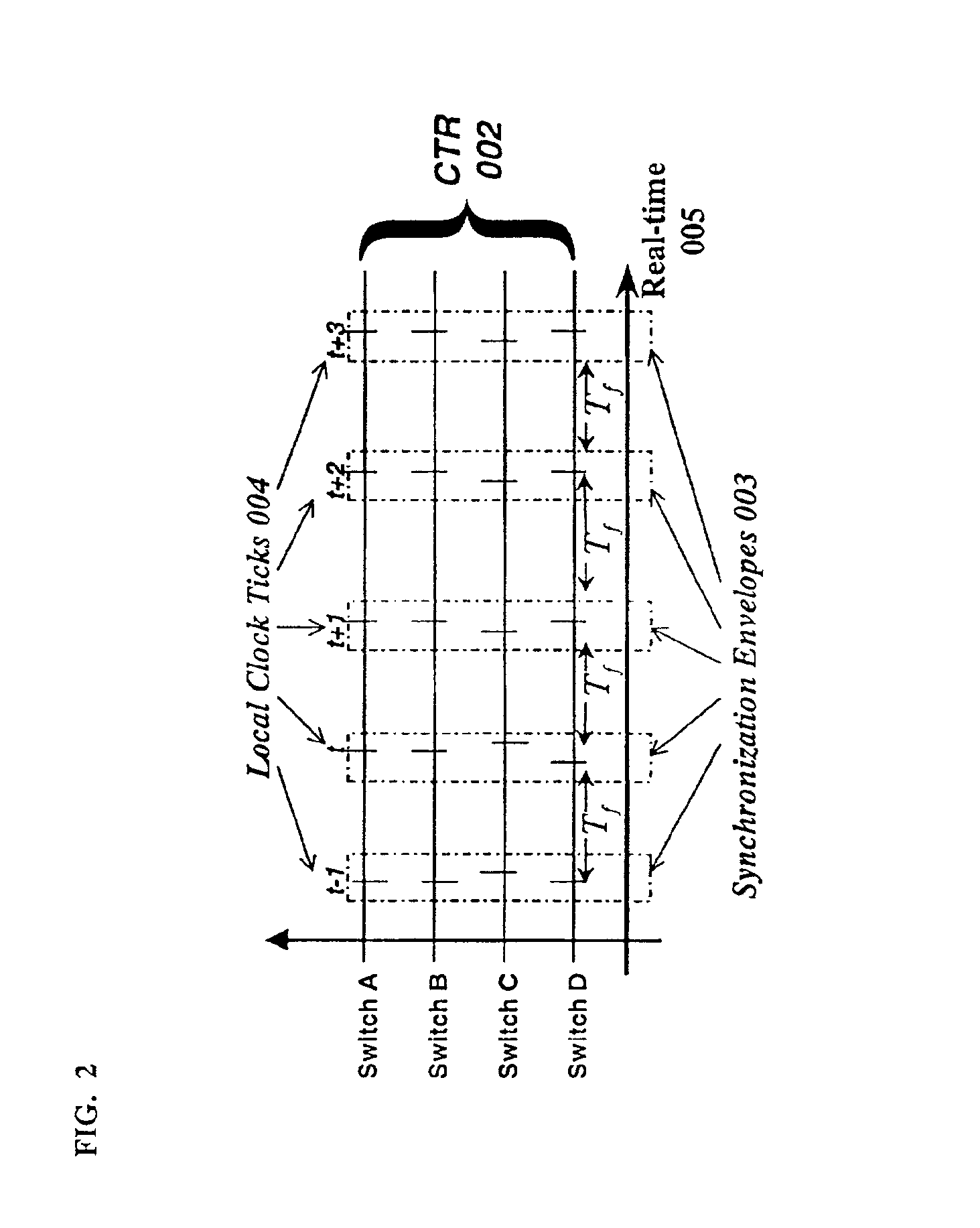Distributed switching system and method with time-based routing
a technology of distributed switching and time-based routing, which is applied in the direction of data switching networks, digital transmission, multiplex communication, etc., can solve the problems of inability to easily enhance to support multiple services or carry multimedia traffic, and the end-to-end transport requirements of real-time multimedia applications are major challenges that cannot be solved satisfactorily, so as to achieve low delay and jitter
- Summary
- Abstract
- Description
- Claims
- Application Information
AI Technical Summary
Benefits of technology
Problems solved by technology
Method used
Image
Examples
Embodiment Construction
[0055]While this invention is susceptible of embodiment in many different forms, there is shown in the drawing, and will be described herein in detail, specific embodiments thereof with the understanding that the present disclosure is to be considered as an exemplification of the principles of the invention and is not intended to limit the invention to the specific embodiments illustrated.
[0056]The present invention relates to a system and method for transmitting and forwarding packets over a packet switching network. The switches of the network maintain a common time reference, which is obtained either from an external source (such as GPS—Global Positioning System) or is generated and distributed internally. The time intervals are arranged in simple periodicity and complex periodicity (like seconds and minutes of a clock). A packet that arrives to an input port of a switch, is switched to an output port based on (i) its position within the predefined time interval and (ii) the uniq...
PUM
 Login to View More
Login to View More Abstract
Description
Claims
Application Information
 Login to View More
Login to View More - R&D
- Intellectual Property
- Life Sciences
- Materials
- Tech Scout
- Unparalleled Data Quality
- Higher Quality Content
- 60% Fewer Hallucinations
Browse by: Latest US Patents, China's latest patents, Technical Efficacy Thesaurus, Application Domain, Technology Topic, Popular Technical Reports.
© 2025 PatSnap. All rights reserved.Legal|Privacy policy|Modern Slavery Act Transparency Statement|Sitemap|About US| Contact US: help@patsnap.com



